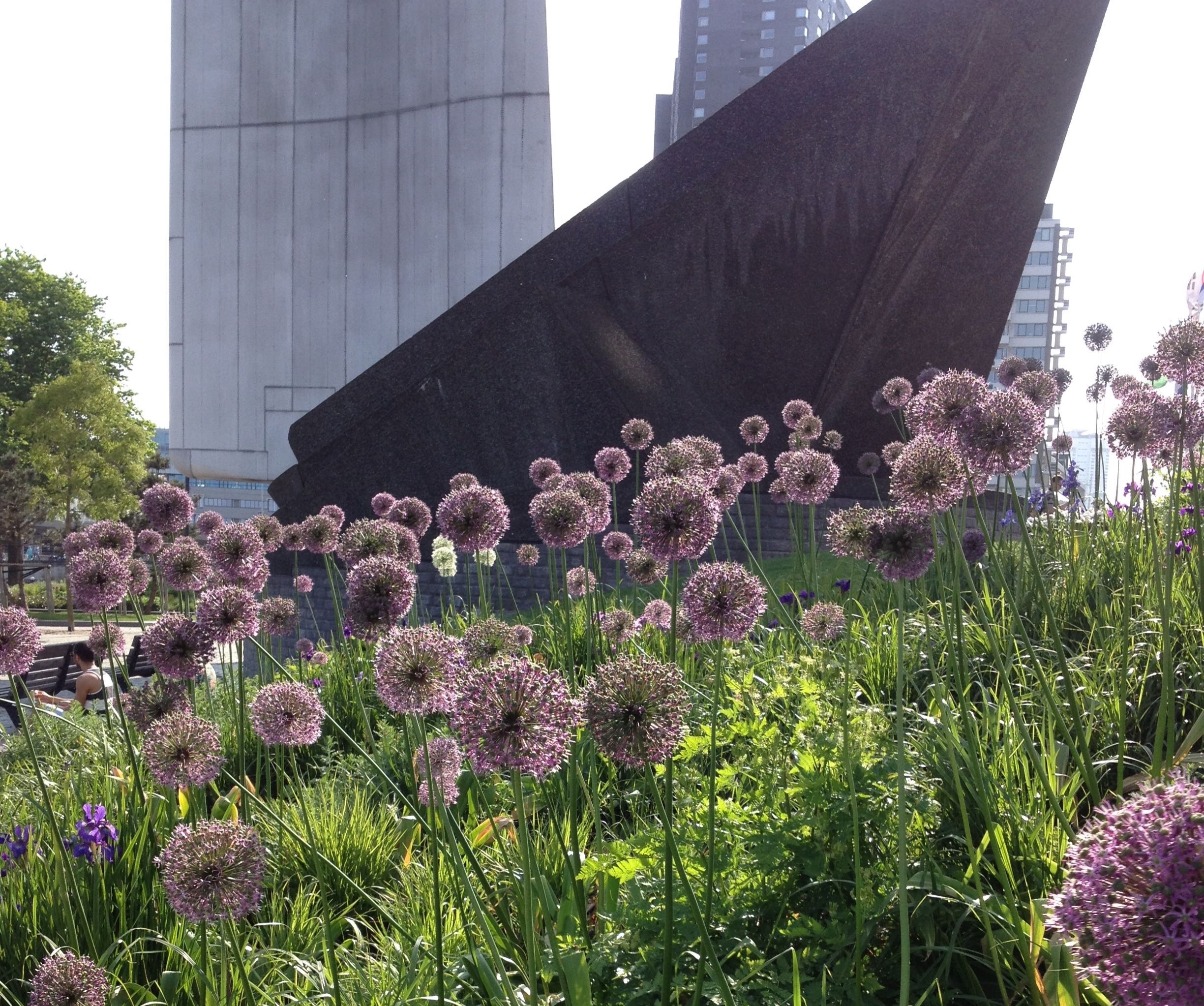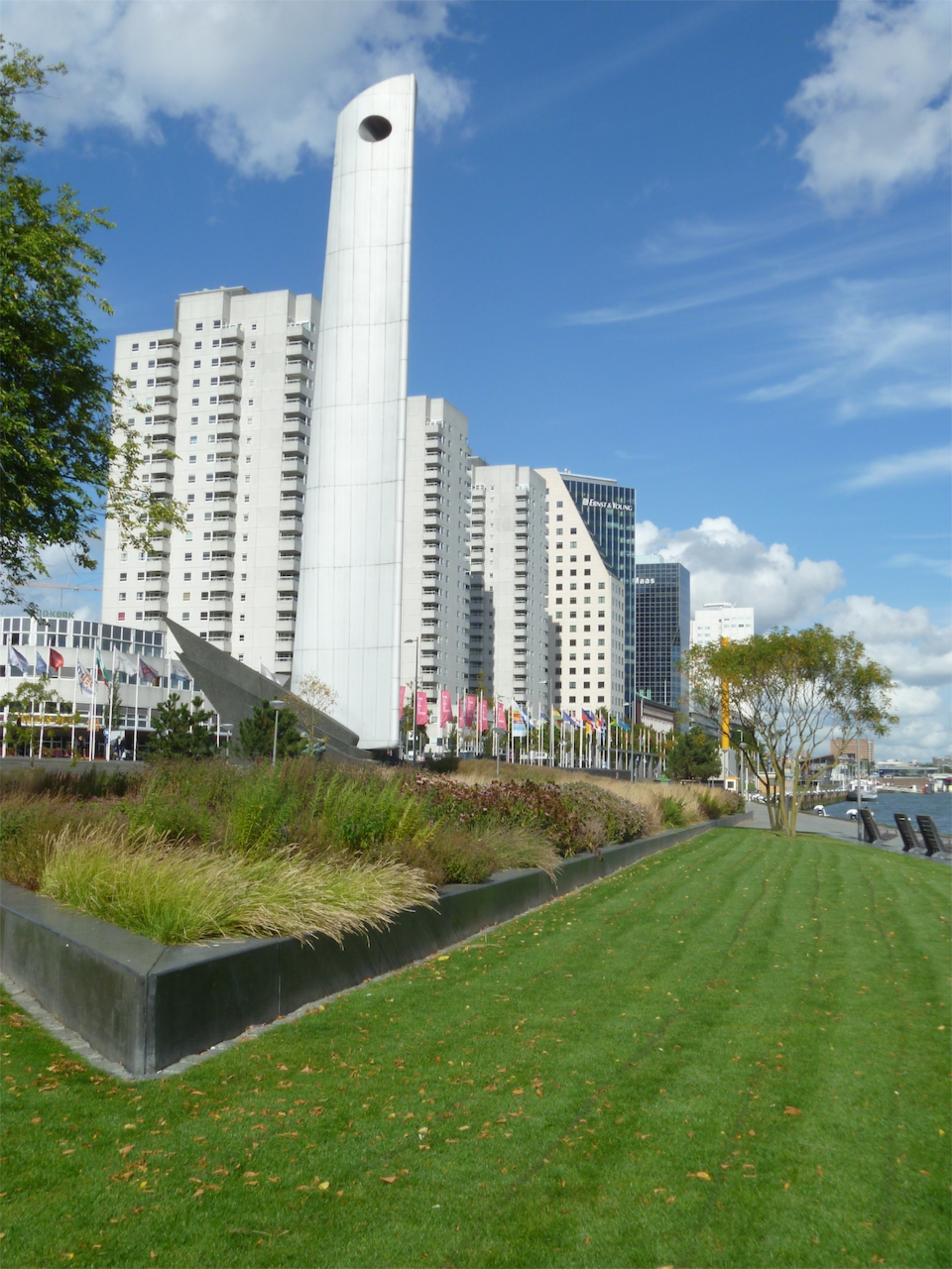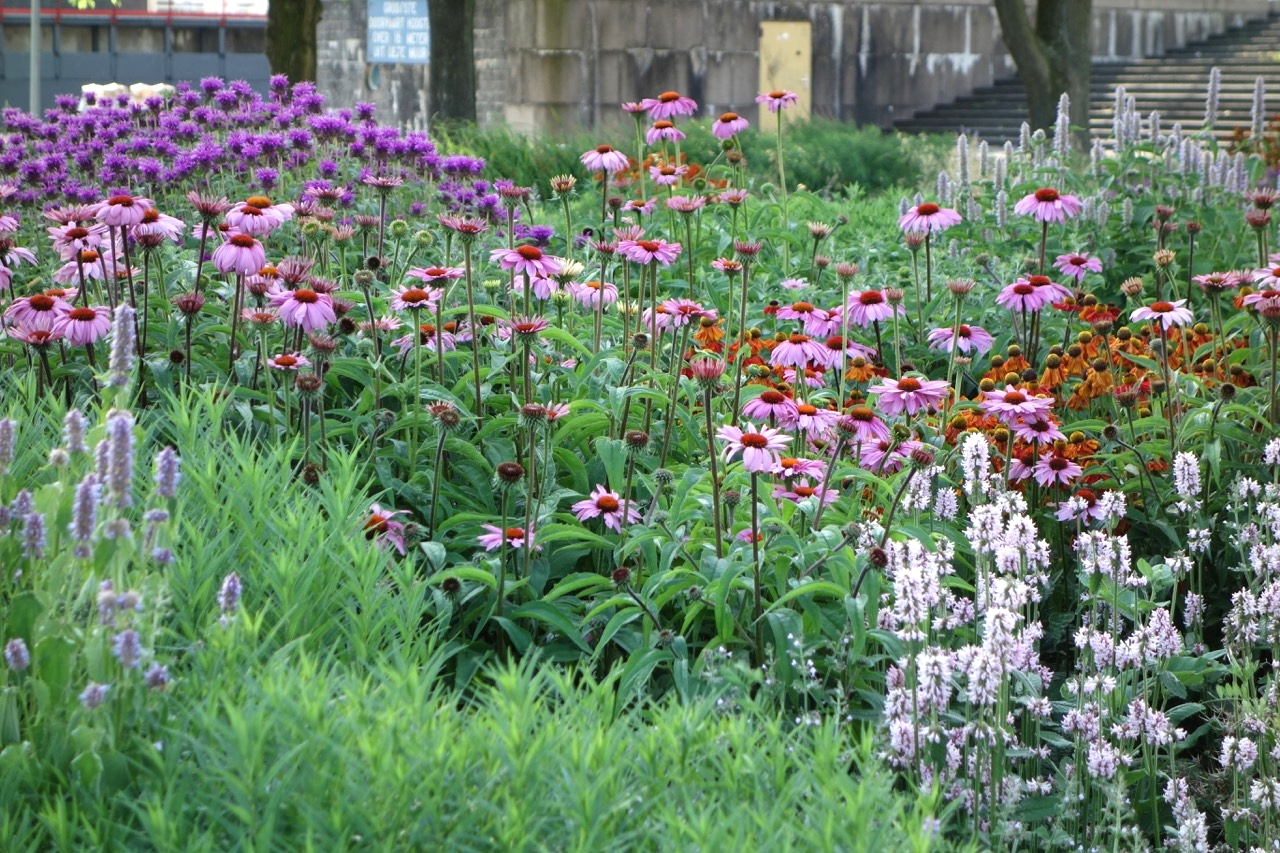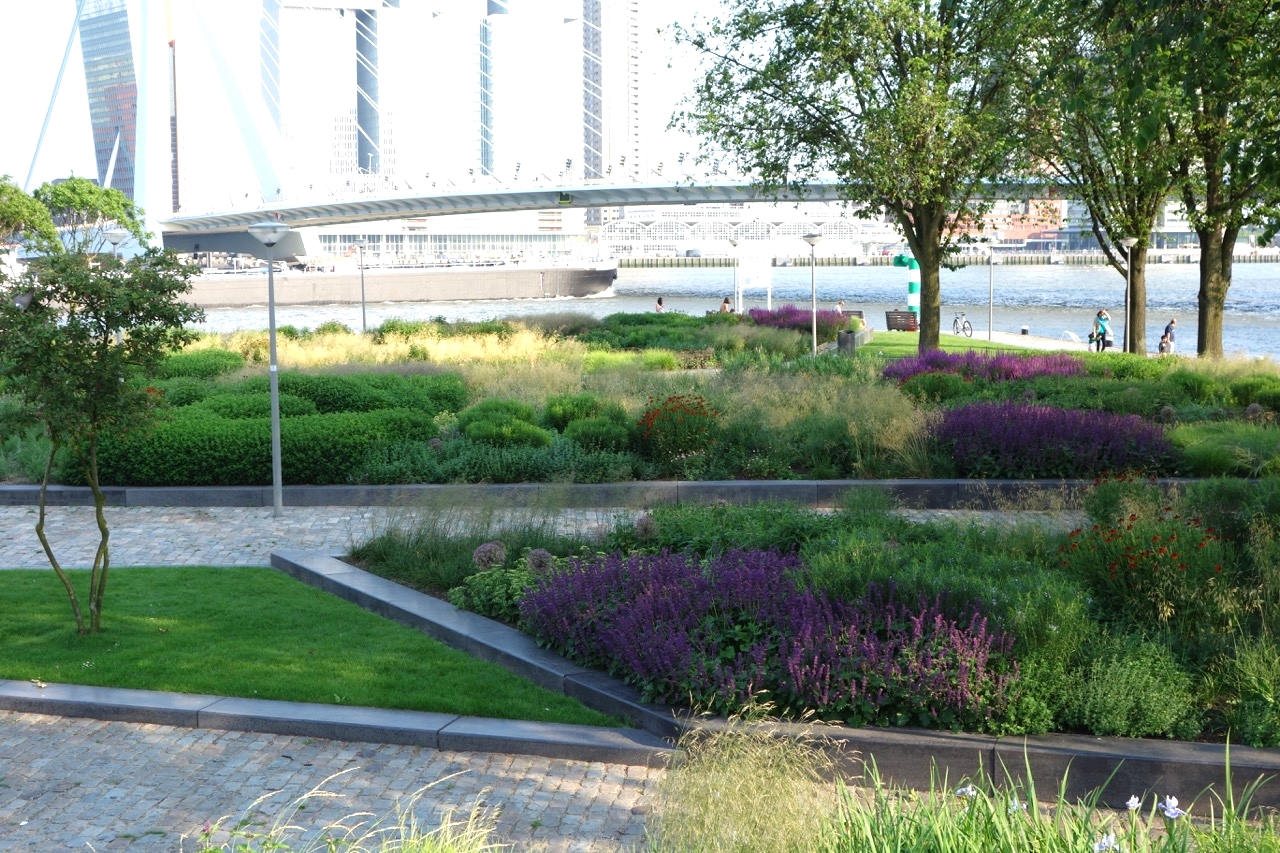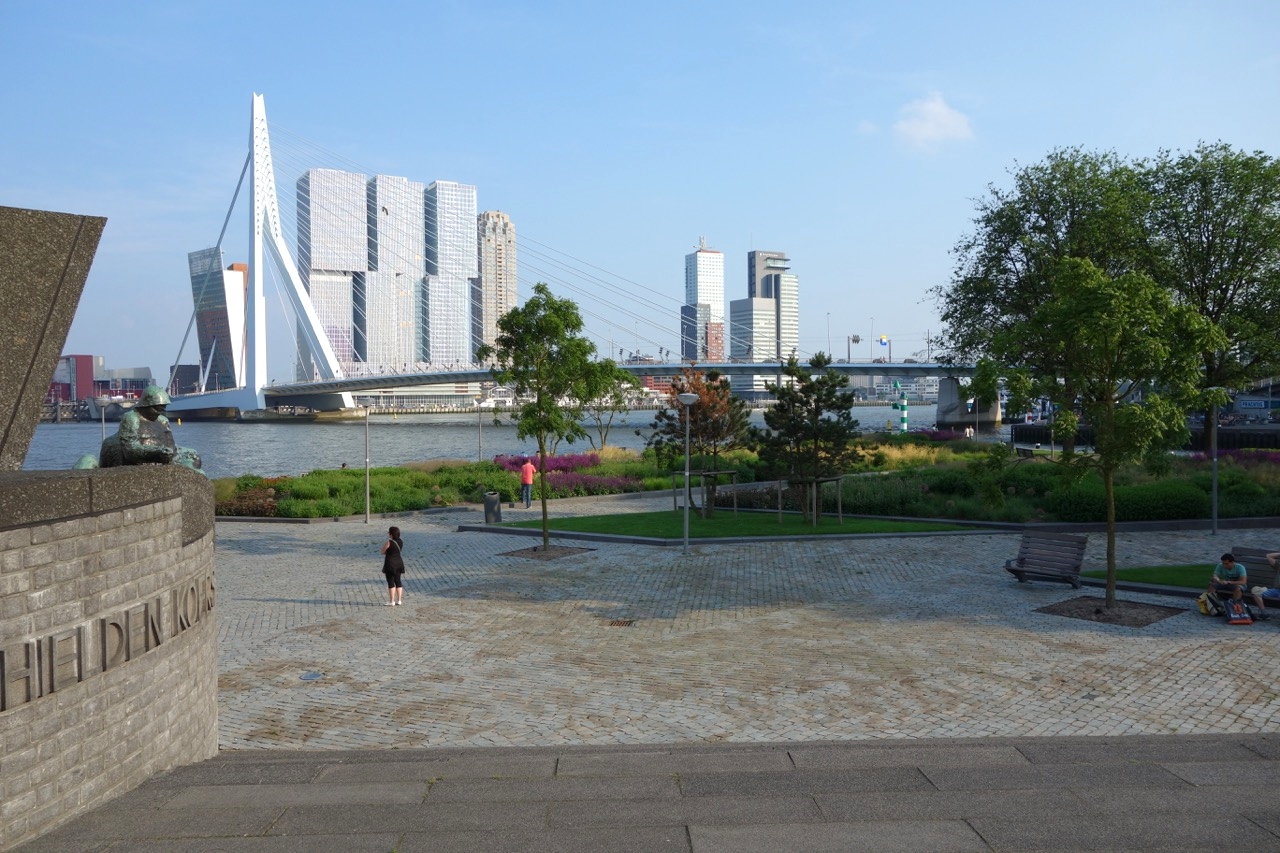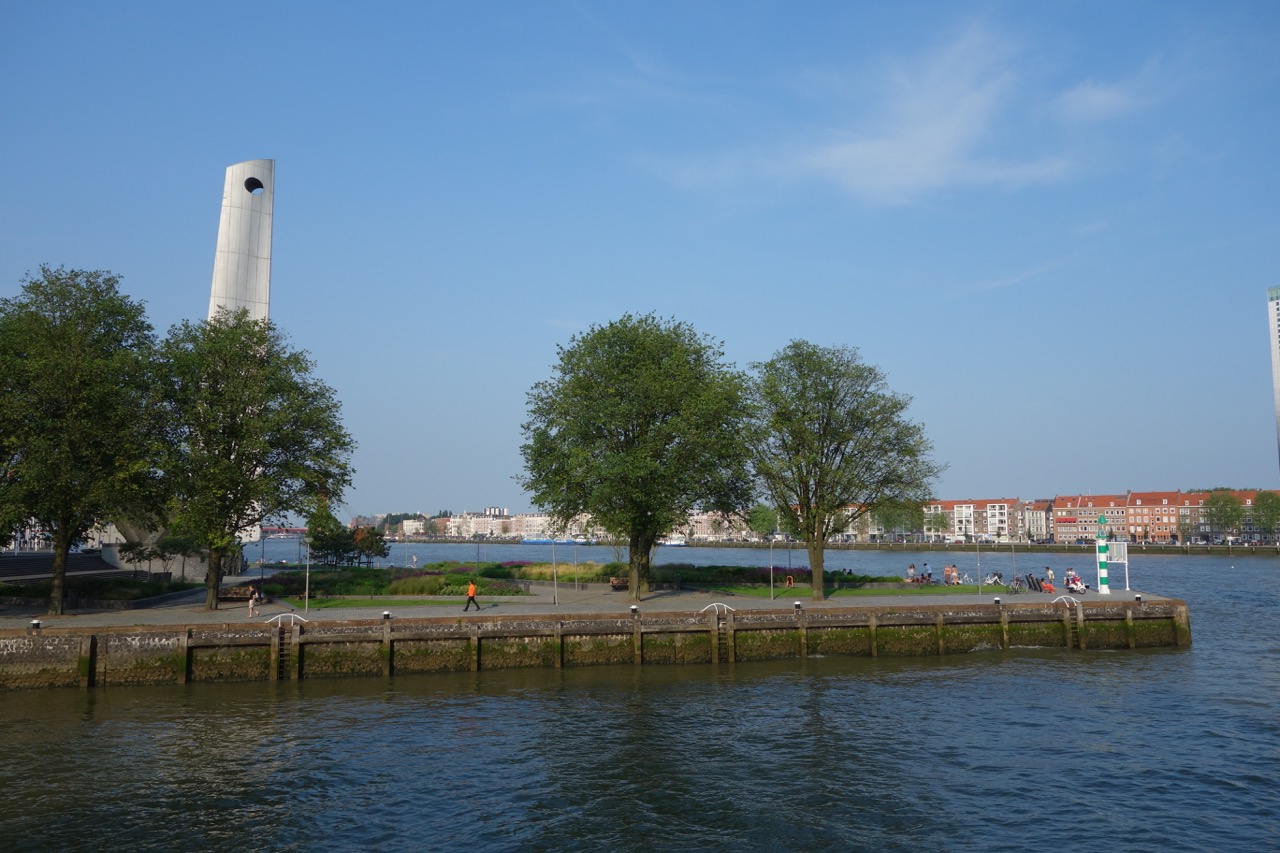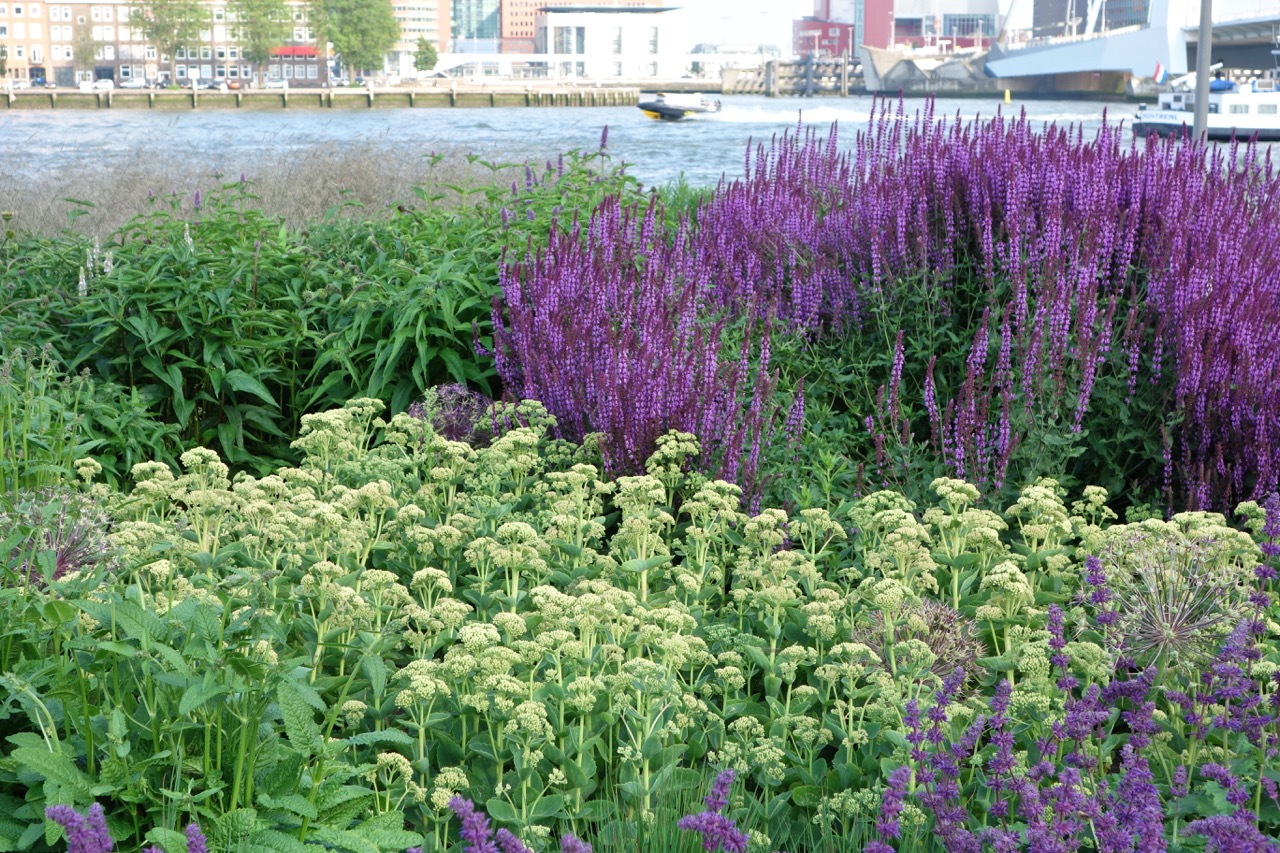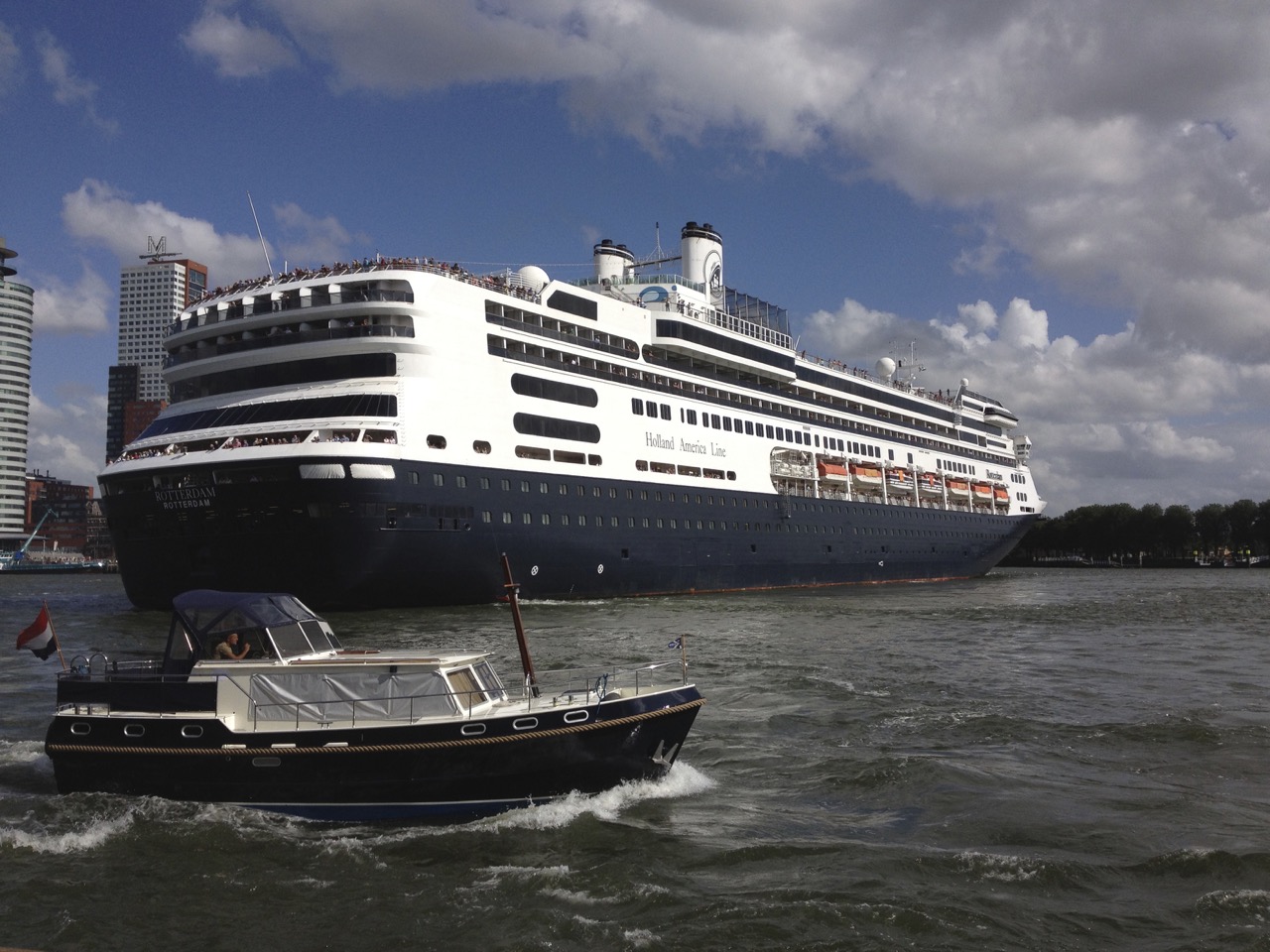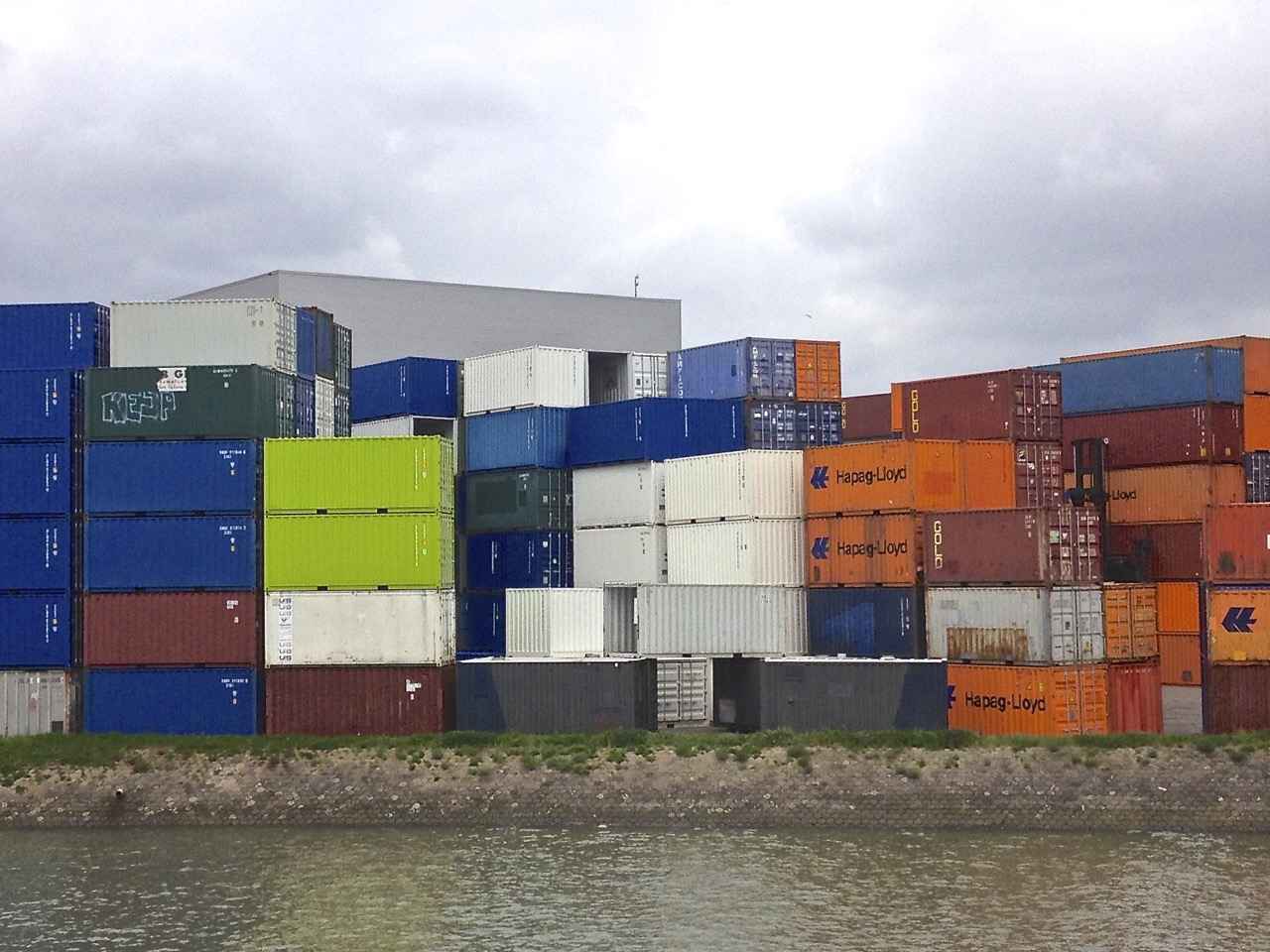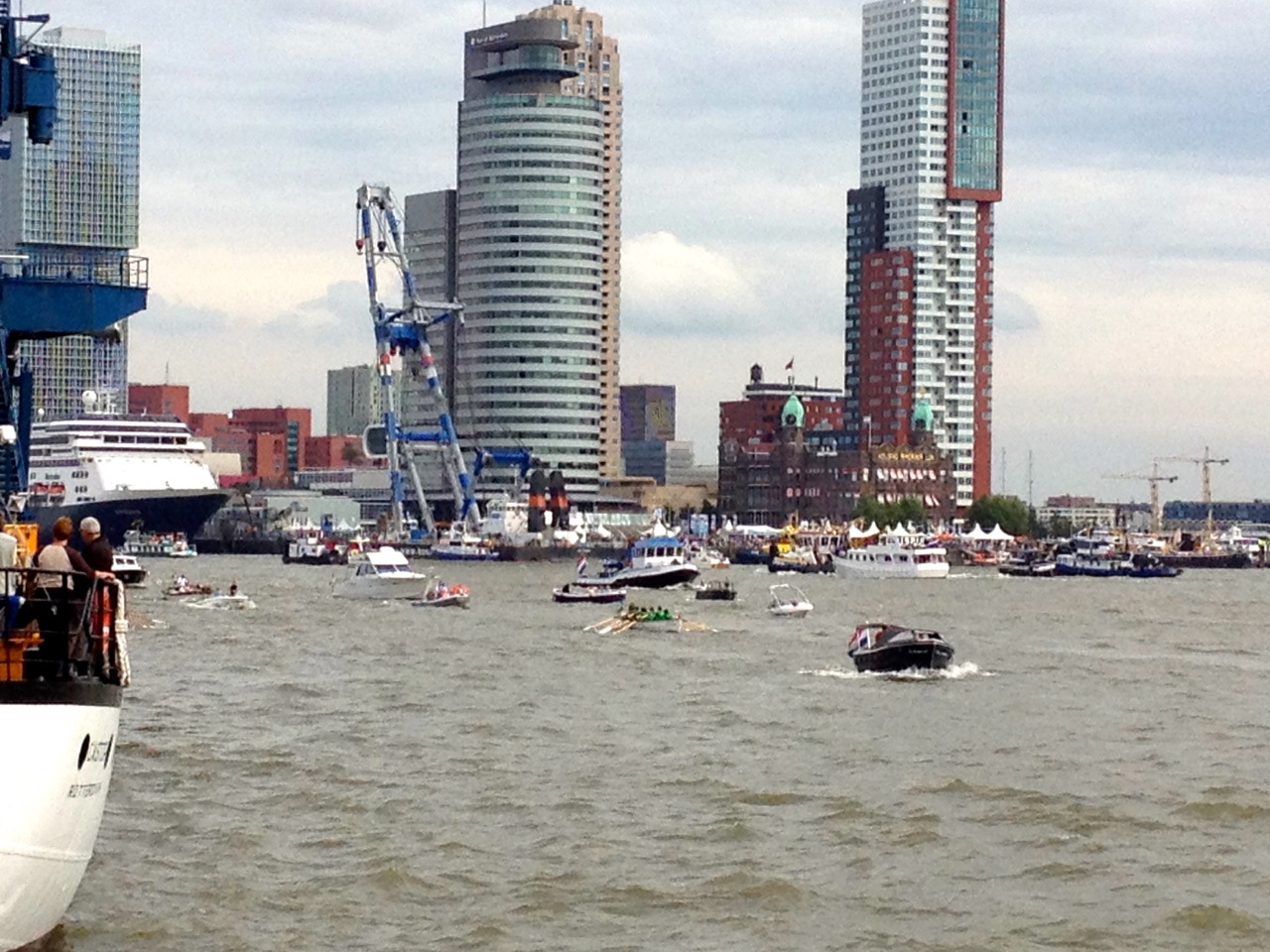Rivers are enjoying a resurgence. In ancient times, people congregated around flowing water. Rivers provided transportation, serving as highways that connected our communities. We turned to rivers for food and drink and to clean ourselves. We never took too much from them.
During the industrial age, we overwhelmed our rivers. We used them to transport raw materials and finished goods to large factories. We managed their powerful flow to create electricity. We used rivers as dumping grounds, destroying the life that they supported.
Thanks to the Waterfront Rotterdam plan, the river has been returned to the city.
But rivers never really lost their attraction. Over the last 50 years, they have made a comeback. They have become places to enjoy – combining natural wonder, ancient history, and an industrial legacy; we have integrated them into our modern lifestyle. Human scale amenities like trails and parks have made our rivers accessible again. My favorite feature, of course, has been the inclusion of gardens along rivers.
One example of this is the shoreline along the Maas River in Rotterdam, the Netherlands. For context: Rotterdam is the largest port in Europe; 30,000 seagoing vessels and 110,000 inland vessels visit the port of Rotterdam every year, and its shores hold acres of docks and warehouses to support them.
I had the opportunity to live in this wonderful city for a few years where my life revolved around this river. I rode my bike to work along its paths, took long runs through its trails, watched fireworks and attended concerts on its banks.
As a garden lover, I was attracted again and again to the thoughtful string of green spaces. Always something new in bloom, always a new perspective to appreciate.
These landscapes were the result of a plan called “Waterfront Rotterdam,” developed in the 2000’s. According to the plan, “It [was] essential that the city draw up a recognizable plan in order to increase the quality of life and attractiveness of the city for its new and existing residents, visitors and business owners: the city center as a city lounge. Rotterdam had turned its back on the river. Its banks were full of parked cars… the riverside areas were unpleasant places to be: stony, windy, featureless.” The planners’ goal was to “return the Maas to the city.”
Among the new gardens, Leuvehoofd and Westerkade are pictured above. These were completed in 2011.
Both landscapes are known for their colorful designs by Piet Oudolf. Packed with perennials, there is always something new to see and enjoy. The wild, meadow like spaces contrast with the hard geometric frame that parallels the river. The back-lit alliums hover above other plantings. Mowed grass invites people to relax and enjoy views of the river.
A World War II monument for merchant fleet victims, “de Boeg," designed by Italian-Dutch sculptor Frederico Antonio Carasso, anchors Leuvehoofd.
Thanks to all who worked to return the Maas to the people. Well done!
Don’t miss these gardens when you are next visiting the Netherlands. (Rotterdam is only a 20 min train ride from Amsterdam.)
Waterfront Rotterdam plan. Source: Biennal 2012

